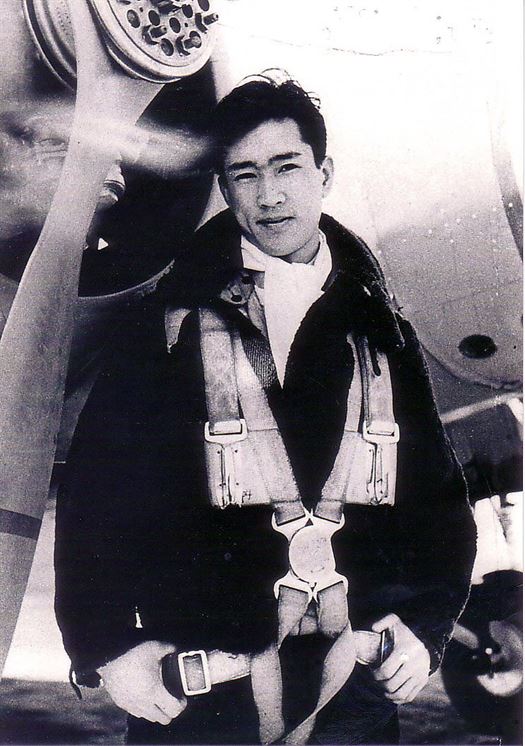
Video
HTML5 Transcript/Captions
[Larry Y. Wong (Interviewer)] For Albert Mah,
flying was as natural as breathing. He learned to fly in Los Angeles and received a commercial pilot's licence.
How old were you when you learned how to fly?
[Albert Mah (Interviewee)] Well I was about uh 18 or,
well I flew a little bit when I was 16, uh with a few lessons and then I continued when I was about 18.
And then from there on, I was lucky 'cause the war uh came on and uh otherwise
Ced and I might not have gotten a job being Chinese and so on.
[Larry] Did you try to join the Royal Canadian Air Force at that time, Al?
[Albert] I came back in uh, to Vancouver at uh in about 1940.
And the recruiting uh sergeant there looked at me, he says uh,
"We can't take you; you're Oriental." So that was sort of a slight you know and,
I walked up Dunsmuir Street and there was Canadian Airways.
Went in and spoke to the manager, Walter Gilbert.
He he says, "How is your father?"
I said my father passed away. He says, "Yes I I know."
He says, "Everybody knew your father 'cause he he did a lot of philanthropy in Prince Rupert.
"And Wop May," he says, "was was a friend of your father. Wop'll hire you."
Next thing I got a letter from Edmonton and I was hired, and Wop was like part of our family from there on.
He came to see my mother when she came back and was a very close friend.
[Larry] Refused by the Royal Canadian Air Force because of his race,
Al became an air instructor for the British Commonwealth Air Training Plan.
[Albert] Wop sent me to the uh to Quebec City and uh uh from there on, uh we used to have about
oh 60 aircraft in the air at once. Uh three flights, or four flights of 13 each, and uh some on compass swings and so on.
Then we had what we call duty pilots which I was included.
They're actually flight commanders, we've commanded the flights which I was part of until 1943,
when Pan-American Airways called me and wanted me to go to Calcutta.
[Larry] When his contract was over, Al joined the China National Aviation Corporation
which was jointly owned by Pan American Airways and the Chinese Nationalist government.
And what did you do with uh Pan-American?
[Albert] Well I joined them and I flew in Homestead, Florida for awhile with them.
And then everybody wanted to go to Calcutta because of the high pay.
And it was uh getting a lot of a attention because China had been cut off from the sea coast and inland.
The only ways China could be supplied was from India.
And um the high pay, however bein' Chinese when I went over,
they only gave me a third of the pay that a white person.
[Larry] Al flew from a base in India into China carrying cargo, fuel and personnel.
His air route was one of the most dangerous in the war.
Not only did he have to fly over the Himalayas, also known as the Hump, he was hunted by Japanese warplanes.
[Albert] A Zero got behind me and I dove around until the, 'til we got into a cloud in a valley,
and then we circled in a valley which was very dangerous.
We couldn't get a fix because we didn't know where the mountains were,
or how close we were, so we circled in the clouds until we figured their fuel supply was getting low so we came up.
[Larry] Were most of your flights within CNAC very dangerous?
[Albert] Oh well, I wouldn't say most of them but a good part of them were.
We'd ice up you know and that was just as treacherous as the uh the Japanese coming up from
a bomb or so on. And uh but uh I think uh drinking with the boys at night was more dangerous sometimes.
Fall on our heads or something. (laughs)
[Larry] What kinds of planes were you flying? Were they pressurized?
[Albert] There was nothing pressurized in those days; we didn't have pressurized airplanes.
We couldn't get up that high. In classes we would say gee if somebody went up 20,000 feet they'd die.
And here, that was in the late 1930's, in 1943 our mechanic Art Prendergast and I took a DC-3
up towards, climbing towards Mount Everest.
And we got up to about 22, 23 thousand feet without oxygen masks or anything.
And uh gee I think uh, I don't know if we're OK today but uh, on account of it, but uh I'm 84 so nobody's made any remarks.
[Larry] Are you still able to fly?
[Albert] Oh yeah I can still handle it. A little rusty of course. Yeah.

Albert in front of a plane
